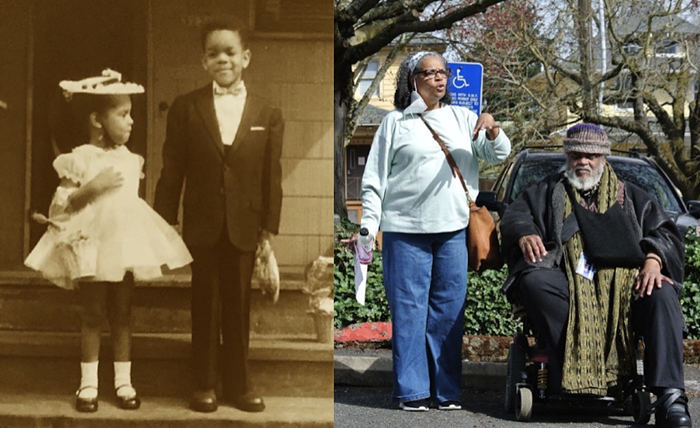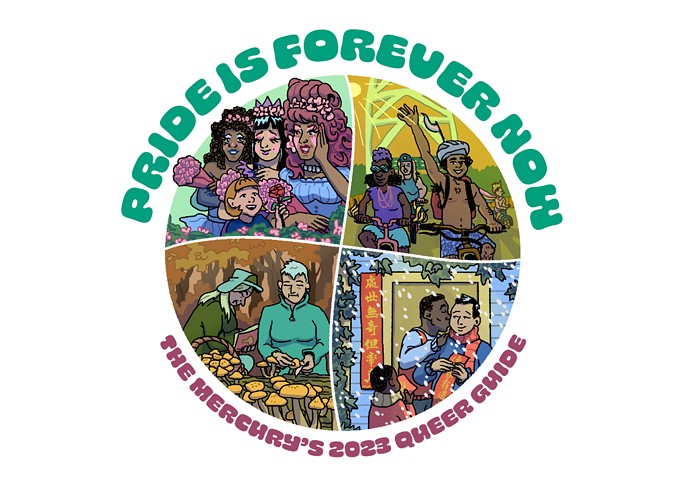Critiquing Christmas: The Fourth Annual Great Figgy Pudding Caroling Competition
Or, Pirates Ruin Everything.
Critiquing Christmas: The Grotto’s Christmas Festival of Lights
Puppets, Choirs, and A BABY CAMEL
Critiquing Christmas: Benson Hotel’s Annual Gingerbread Masterpiece
Warning: Do NOT Eat It
Balanchine’s Nutcracker Will Never Be The Nutcracker Of My Childhood
Come For the Amazing Choreography! Leave Because Dancing Candy Should Not Be This Racist!
Critiquing Christmas: PIR’s Winter Wonderland
The Portland International Raceway Has All of the Lights
Critiquing Christmas: Tuba Christmas
An Ode to the Orchestra’s Mightiest Instrument—the Tuba!
The Nutcracker is the first ballet I ever saw. My mom took me when I was five, and I was so enthralled that I put my coat on when the artificial snow started to fall. Until 2014, Seattle’s Pacific Northwest Ballet (PNB) was one of the country’s few ballet companies to produce an alternative to George Balanchine’s sentient candy parade of nations; theirs was choreographed by Kent Stowell, with design by Maurice Sendak(!). It was moody and beautiful and weird, and wholeheartedly focused on the inner world of its girl heroine. When PNB switched to Balanchine, I was bereft.
It was with this bias, wearing sweatpants and drinking wine out of a tiny straw with the one friend who’d agreed to join me, that I attended Oregon Ballet Theatre’s Balanchine Nutcracker. But as soon as the overture started, a weepy thrill came over me, and I had a very nice time. This is no thanks to the opening scenes, which are too full of dull kid-dancing to be much more than a slog. (You have to sit through almost the entire first act before seeing anyone en pointe. Unacceptable.) The real thrill of Balanchine’s Nutcracker is his delightful choreography for Dewdrop (retiring soloist Candace Bouchard), who punctuates the Waltz of the Flowers with energetic jumps, and the Sugar Plum Fairy (Xuan Cheng), who holds an arabesque as she’s pulled forward slowly on one foot in her final pas de deux.
My enjoyment was soured, however, by some tremendously racist costuming choices: The “Chinese Tea” dancers appear in full-on yellowface, including a Fu Manchu mustache. A harem-esque outfit on “Arabian Coffee” isn’t much better. Dancing candy should not be this racist.

My qualms do not end there. This Nutcracker isn’t really about Clara (here named Marie). Instead of being the star of her own dream, she’s championed by a child prince, then sits for the entire second half of the ballet. She might as well not be there.
In the Sendak/Stowell version, Clara is only a kid in Act 1, then magically transforms into a beautiful grown-up princess in Act 2. She kills the rat king with her shoe, and is rewarded with a badass tutu and a hot prince. At the end of the ballet, Clara wakes up. It was all a dream—but also a safe way to explore her desires and the prospect of adulthood within the confines of her imagination. It’s cerebral and fun, and you could even make the case that it’s feminist.

That can’t be said of Balanchine, who banished Suzanne Farrell from his company when she wouldn’t marry him, and pioneered an unrealistic body type that required grown women to look like adolescent boys (this is why someone like Misty Copeland, who is tiny, is now considered a “curvy” ballerina). Balanchine was a champion of ballerinas, but not women. And The Nutracker is about knowing you’ll grow up to be a woman. It’s not about what a female body looks like; it’s about living inside of one. Balanchine couldn’t possibly have understood this, and it’s something his Nutcracker will never get quite right.
Overall Christmas rating: 7 candy canes.



















